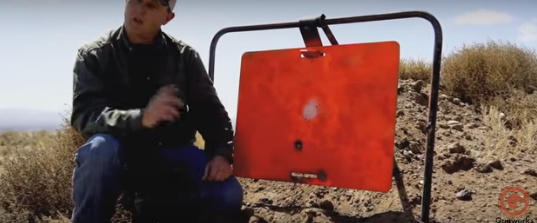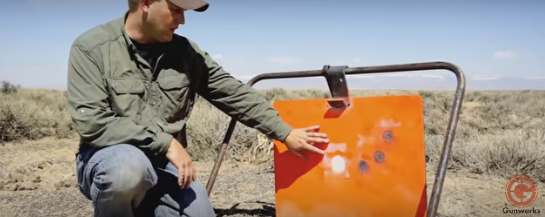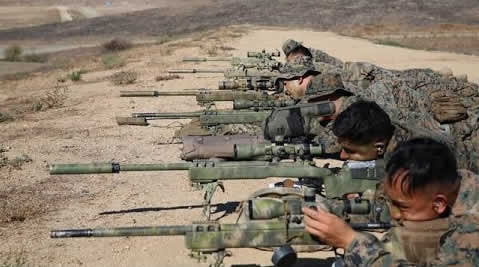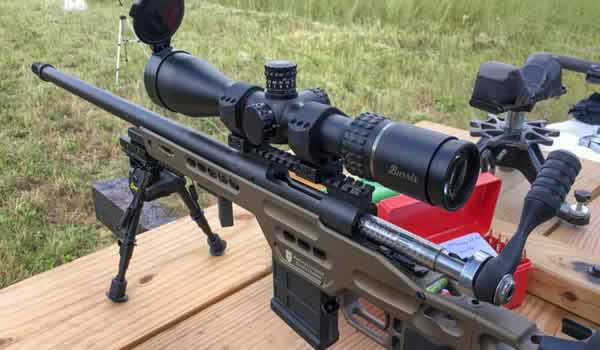
Precision Long Range Shooting and the Coriolis Effect
You may not be taking this into Account in Precision Long Range Shooting
If you’re into long range shooting, its important to understand how the “Coriolis effect” affects your shot at 1000 yards or greater.

The Coriolis effect is the rotation of the earth and the movement of a target downrange from the shooter. This is another element that a long distance shooter has to consider for along with wind, rain, snow, distance, elevation and a many other factors. Accounting for all these factors signifies the skill sets needed for precision long range shooting.
Below highlighted is the simple layman’s term and explanation from Jeremy Winters of Gunwerks, he also demonstrates taking a shot from 1000 yards out to the west and easterly direction.
“if you’re shooting West, your target’s gonna rotate up and towards us, which is gonna cause the bullets to hit lower.”
“if you’re facing east, the target’s going to be dropping and slightly moving away, which is gonna cause the hits to be higher.”
Jeremy points out these small errors can cause huge misses at greater distances than 1000 yards if you don’t pay attention to.
It is one more element that a long distance shooter has to account for along with wind, rain, snow, distance, elevation and a myriad of other factors.
Video Transcription
Hi I’m Jeremy Winters, Product specialist here at GunWerks. Today we’re going to go over one of the common issues guys have when collecting data to either build a drop chart, or build a ballistic compensator like we use on our systems.
We field hundreds of calls a month where guys cannot re-verify their data once they’ve shot one day and go out and try to return the same data -let’s say- a week later. And one of the common issues is -that we see- is the Coriolis effect, and what guys are not doing is taking into account the effect that this can have on your shooting at longer ranges.
Now real quick, let’s explain the Coriolis effect in laymen’s terms: The Coriolis effect that when the bullet leaves from the gun, it is actually leaving the surface of the earth, so as the bullet leaves the barrel of the gun, the Earth is still rotating, and the bullet is not rotating with the Earth, so the Earth will actually rotate from out the underneath of the bullet while it is in flight.
So as the Earth rotates, it actually rotates from the West to the East. So what that’s gonna do to our targets is, is if you’re shooting west, your target’s gonna rotate up and towards us, which is gonna cause the bullets to hit lower. And if you’re facing east, the target’s going to be dropping and slightly moving away, which is gonna cause the hits to be higher. Now why this is important is, out to a thousand yards, you could have almost a full minute of correction due to Coriolis effect, depending on which direction you sighted in your zero. Now to show you guys just how much effect there’s going to be, we’re going to put on a little shooting demonstration here, I’ve got targets West and East of us, exactly 1000 yards in each direction.
So what we’re going to do to prove this Coriolis effect on our rifle here, is we’re going to shoot it out to a thousand to the west, and we’re gonna shoot it out to a thousand on the east, and we’re gonna measure the difference in those group centers. And hopefully it’s gonna show you guys that this kind of error can lead to bigger errors in your drop data.
[Shooting]
Alright, got three hits on the steel down there, we’re gonna switch directions, switch the bench over, and we’re gonna shoot East now.
[Shooting]
Alright, we got three more hits on this steel down here, now we’re gonna rack up all our gear and we’re gonna check these out, measure ’em up, show you the results.

Alright, we made it down to our target that we shot at the west, this is our west target here. As you can see, they’ve all dropped down quite low. We’ve got eight inches from center to the center of the group, which is a little lower than we expected, but we were dealing with some pretty stiff mirage, so we’ve got a nice little group here, we’re gonna pack up this target and head down to our target that we shot to the east, and we’ll compare the two groups, and show you the difference of just switching directions. That’s all we did. We switched from West to East.

Alright, we’ve made it down to our target on the East target, now, and as you can see, they’re not quite too high, we’ve got about three inches, maybe three-and-a-half to the center of the group above bulls-eye, so if we compare this to our other target, we’re three inches high here, we’re eight inches low there, that’s eleven inches, just over a minute of difference between just shooting from the west to the east.
Now how does this affect you and your data? One minute with this seven LRM that we’re shooting, at a thousand yards, is worth 70 feet per second if you were trying to develop drop data, and that could make huge differences in your drop data and your custom turret if you were actually to figure the data shooting east and west. So the tip today is, always do the data either North and South, that will eliminate Coriolis up and down, or know how much effect that has on it, and take that into account on your ballistic data.
Source: Jeremy Winters of Gunwerks, Andy Van Loan



